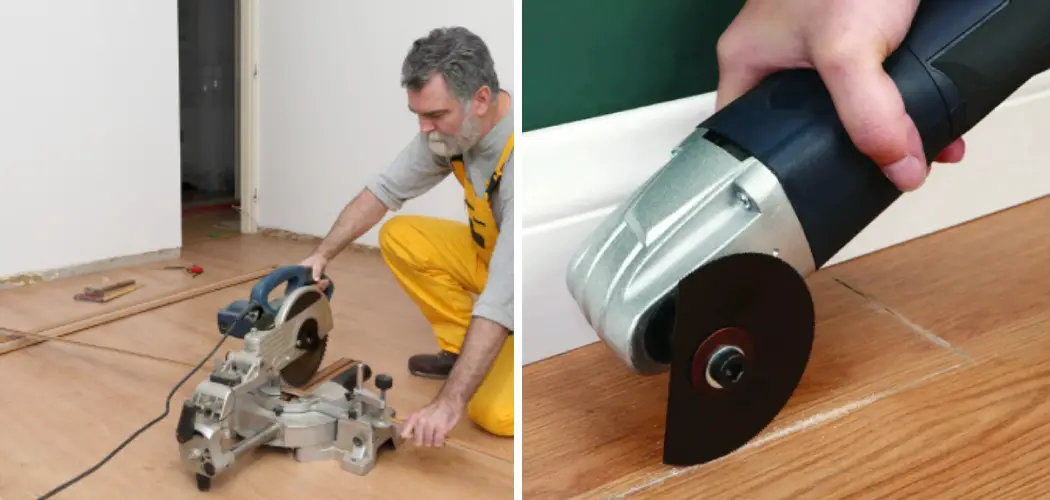Wood flooring is popular for many homeowners who want to add a natural and timeless look to their homes. It can be expensive, but it also adds value to your home. However, wood flooring is not always easy to install yourself; you need the right tools and techniques in order to get it just right.
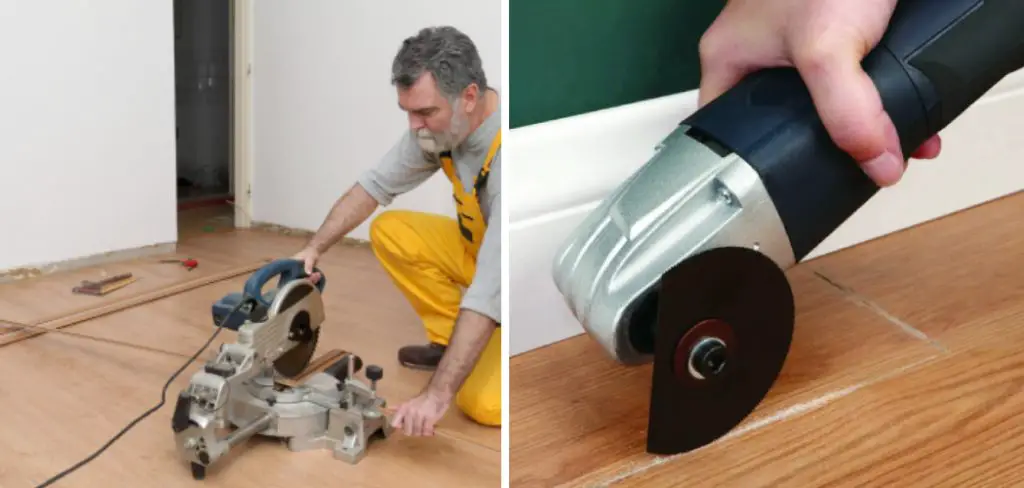
Knowing to cut wood flooring properly is essential if you are installing your own wood flooring. This guide will provide you with all the information you need to know about cutting wood flooring accurately and safely.
Cutting wood flooring is a cost-effective way to improve the look and feel of any room. Not only does it add style and class to the home, but it also increases the value of your property. It creates a timeless look that will last for years. With proper installation techniques, cutting wood flooring can give you years of enjoyment. In this blog post, You will learn how to cut wood flooring in detail.
Tools You Will Need
- Tape measure
- Pencil or marker
- Safety glasses
- Ear protection
- Push broom & dustpan
- Utility knife
- Saw (jigsaw, circular saw, miter saw)
- Pry bar/crowbar
- Speed square or another straight edge
- Hammer and chisel (optional)
To get started, you will want to measure the area where you are going to cut the wood flooring. Once you have your measurements, mark them with a pencil or marker on the surface of the wood.
Step-by-Step Processes for How to Cut Wood Flooring
Step 1: Inspect the Wood Flooring
Before cutting the wood, make sure to inspect it carefully for any potential issues. Check for warping or other signs of damage as well as overall wear and tear. If you find any problems, repair them before proceeding with the cutting process.
Step 2: Mark The Cut Lines
Using a pencil, measure and mark out where you need to make your cuts on the wood. Use a straight edge to ensure accuracy. Choosing the right saw is essential for cutting wood flooring successfully. For hardwoods, we recommend using a circular saw or jigsaw with fine-toothed blades specifically designed for cutting wood flooring.
Step 3: Secure the Wood Flooring
Make sure to secure your wood flooring with clamps so that it remains in place while you’re making cuts. Connect the saw onto a workbench or table so that it is stable and level, then adjust the blade height until it is compatible with the thickness of the wood flooring.
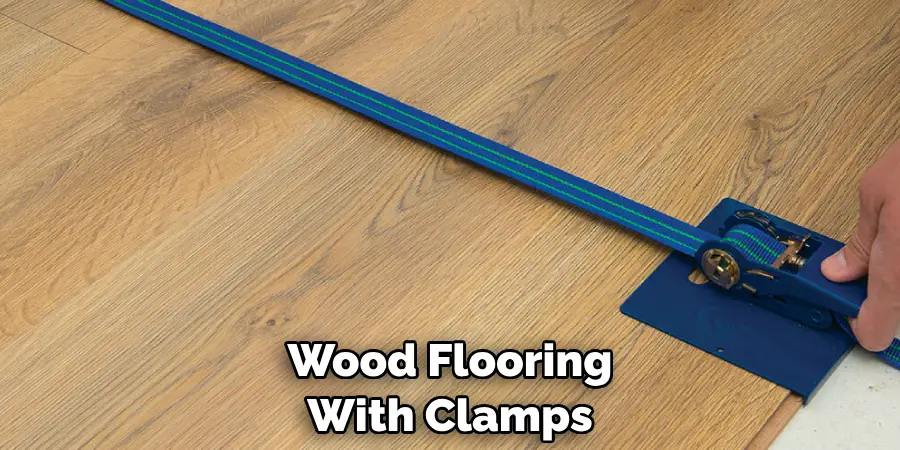
Step 4: Wear Personal Protective Equipment (PPE)
Before beginning any cutting work, make sure to wear protective gloves and safety goggles. Start by making small cuts along your marked line, then gradually cut deeper until you reach the desired depth. After each cut, use a shop vacuum to clear away any sawdust created. This is especially important for jigsaws as the sawdust can clog up the blade, making it inefficient.
Step 5: Sand The Edges Of Your Cut
Once you’ve finished making your cuts, use sandpaper to clean up any rough or uneven edges. Before gluing down the wood flooring, place each piece of cut wood into its corresponding space and make sure it fits correctly. When you’re ready to install the wood flooring, apply adhesive to the subfloor and carefully place each piece of wood. Make sure to check that the wood is level and secure before continuing.
After following these steps, your wood floor should be properly cut and installed! If you have any further questions about cutting wood flooring, consult a professional for help.
Safety Precautions for How to Cut Wood Flooring
- Wear safety goggles and a breathing mask when cutting wood flooring to protect your eyes and lungs from dust particles.
- Ensure the area is well-ventilated, as sawdust or fumes may be generated during cutting.
- Always unplug power tools before changing blades or making adjustments, ensuring that they are properly turned off.
- Make sure to use the right type of saw blade for cutting flooring, and always ensure that it is sharp before use.
- Securely attach the wood flooring to a flat surface when cutting, as vibrations may cause pieces of wood to fly off in different directions.
- Be aware of your surroundings – never cut wood flooring too close to walls, furniture, or other items.
- Clean up sawdust and debris as soon as possible after cutting to prevent injury. This can be done with a vacuum or broom and dustpan.
Always remember to take the necessary safety precautions when cutting wood flooring to ensure your own safety as well as that of others in the area.
What Are the Most Common Mistakes Made When Cutting Wood Flooring?
When cutting wood flooring, many people make mistakes that can damage the material and result in an unsatisfactory job. Common mistakes to avoid include:
- Cutting Too Fast: Taking too long of a cut with the saw will cause the blade to heat up, resulting in chipped or burned edges. Take slow, steady cuts instead.
- Not Using a Clamp or Jig: This is especially important when cutting curves and complex shapes, as it helps keep the saw straight and reduces the risk of warping.
- Forgetting to Measure Twice: Before cutting, double-check your measurements to ensure everything is accurate and that the cut will be the right size.
- Not Using Hearing Protection: Wood saws produce a lot of noise, so it’s important to wear ear protection when cutting wood flooring.
- Ignoring Safety Protocols: Always read and follow all instructions and guidelines provided by your saw manufacturer to ensure safety while operating the machine.
By avoiding these common mistakes, you can ensure that your wood flooring is cut properly and safely. With the right preparation and technique, you can achieve a high-quality finish that will last for years to come.
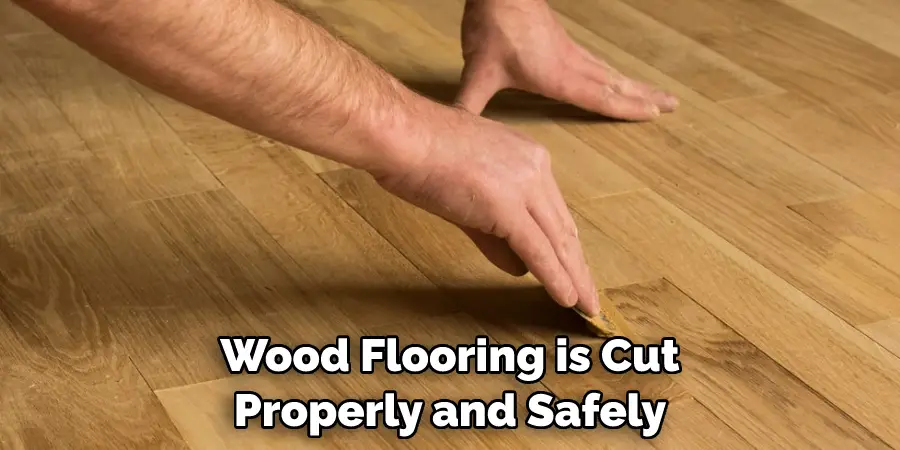
How Can You Avoid Damaging the Surrounding Flooring While Cutting?
When it comes to cutting wood flooring, you must be careful not to damage the surrounding area. To avoid this, you should make sure that your saw blade is sharp and in good condition before beginning. Additionally, take extra care when making turns or changes of direction and always use a backer board as support for the saw when making intricate cuts to avoid any damage.
It is also important that you use proper technique when cutting; always cut away from yourself to reduce the risk of kickback, and be sure not to force the saw into the wood as this can cause splintering or tear out.
Lastly, take your time and make sure each cut is precise before moving on to the next. Following these tips will help ensure that your flooring is not damaged during the cutting process.
It can be difficult and time-consuming to cut wood flooring, but with careful planning and practice it can be done safely and efficiently. With a few precautionary measures in place, you can ensure that no significant damage is done to your wood flooring or the surrounding area while you are cutting.
What Type of Maintenance is Needed for Wood Flooring After It Has Been Cut?
Once you have successfully cut your wood flooring, you will need to do some maintenance to ensure it remains in good condition. To start, sweep or vacuum the area around the cut so that all dust and debris is removed. This will help prevent dirt from settling into the newly-cut space.
If possible, use a wet mop to remove dust and dirt further. You should also inspect the edges of the cut for any jagged pieces or sharpness; if necessary, use a belt sander to smooth them down. This will help reduce splintering and cuts from occurring when walking on the wood flooring.
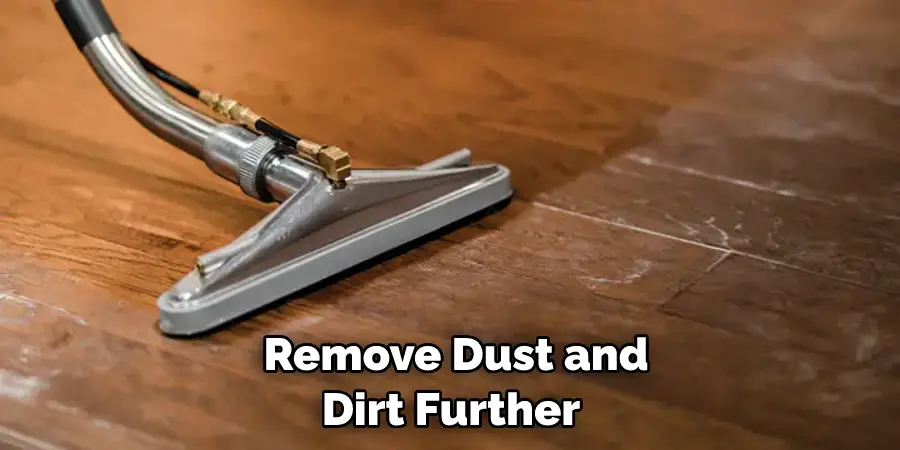
Finally, you may need to apply a finish or stain to the newly cut area to blend in with the rest of the floor and ensure it is sealed from moisture. Be careful not to over-apply any products you may be using, as this can cause damage. By following these steps, your wood flooring should look great for years.
Are There Any Environmental Concerns to Consider When Cutting Wood Flooring?
When cutting wood flooring, there are some environmental considerations to keep in mind. Sawdust and air pollutants created by power saws can be hazardous to the environment if not properly managed.
To reduce the potential harm that these substances might cause, it is important to ensure that your workspace is well-ventilated with plenty of fresh air and that you are using the proper safety equipment, such as a dust mask or respirator.
Additionally, many types of finishes used on wood flooring materials contain volatile organic compounds (VOCs) that can be hazardous to both human health and the environment if not properly managed. Before cutting wood flooring, ensure that any finish present is labeled as VOC-free.
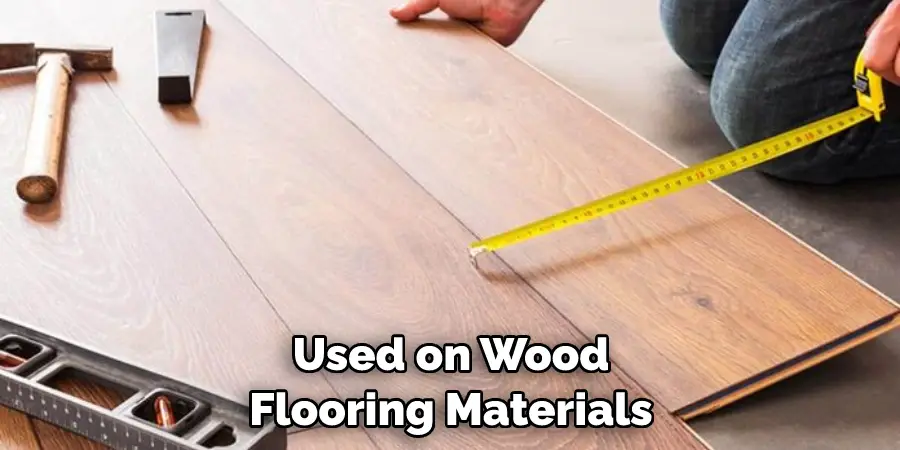
Finally, be sure to responsibly dispose of any sawdust created in the process and recycle or reuse it if possible. Following these simple steps will go a long way toward ensuring that cutting wood flooring is done safely and with minimal environmental impact.
Conclusion
In conclusion, cutting wood flooring is important for any home renovation or DIY project. Taking the time to measure, mark, and cut your wood flooring properly can make a big difference in how smoothly the job goes. Starting with a basic saw, such as a circular saw or handsaw, allows you to save time and money while still getting accurate and clean cuts.
Using a jigsaw is great for precision cutting when making intricate designs or patterns, while a router can be used to make faster and smoother straight cuts. I hope this article has been beneficial for learning how to cut wood flooring. Make Sure the precautionary measures are followed chronologically.
You Can Check It Out Clean Hardwood Floors with Hydrogen Peroxide

